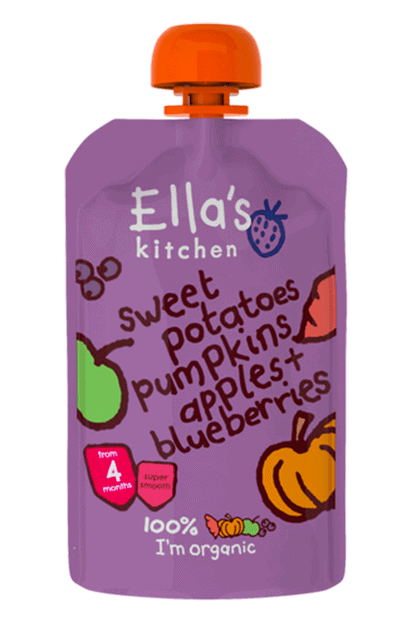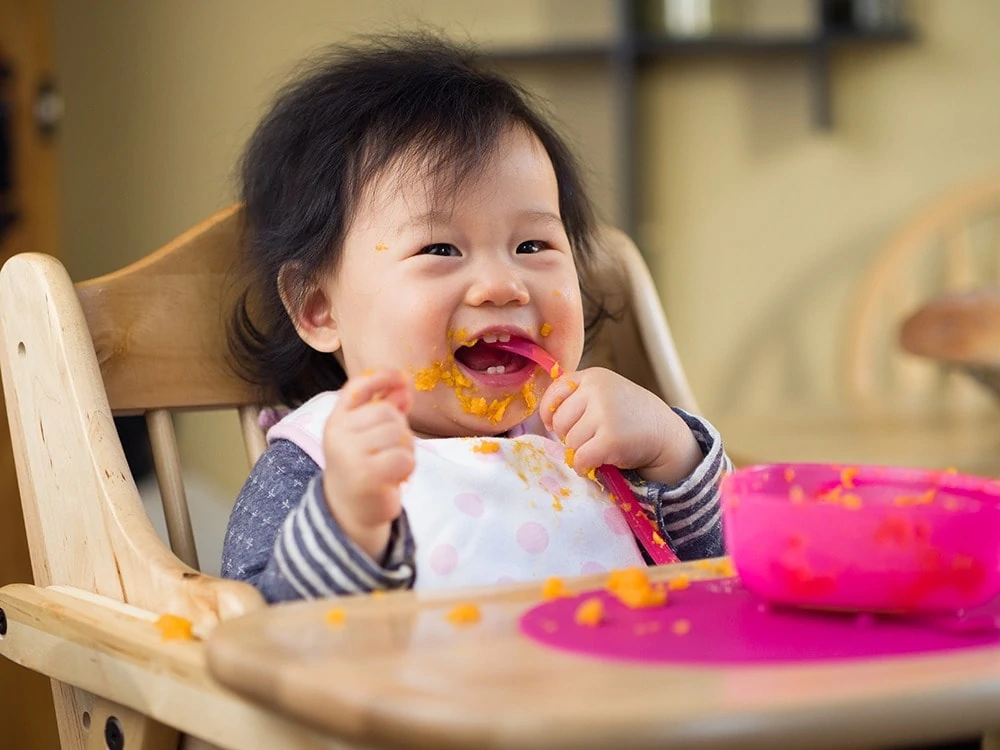The two-child policy and a demand for safe, healthy and trustworthy products has seen a spike in demand for British baby food products, writes Sarah Franklin
In the near future, China’s highly lucrative baby food sector will go through a something of a baby boom according to CBBC‘s food and drink sector lead, Ran Guo. In no small part, this is due to the introduction of China’s two-child policy in 2016, combined with a strong desire for foreign products. According to Euromonitor, eight out of the top 10 milk powder brands that dominate China’s £15 billion milk powder market are foreign.
Kate Herrera, buyer from targeted mother and baby e-commerce platform Beibei, thinks that British baby food in particular has the potential to thrive due to being “well-known by mass consumers worldwide.” Ella’s Kitchen, Piccolo, Kiddylicious, Little Freddie and Organix are just some of the British baby food and milk powder companies already profiting from opportunities in China.
According to the World Health Organization (WHO), many Chinese parents use formula powder and homemade supplements to feed their babies, with the majority of Chinese baby food being homemade. This is because there are currently not enough commercially produced baby foods in the Chinese market that Chinese consumers believe provide ‘pure’ and ‘healthy’ food.
A 2015 baby food market report conducted by Nelson, said that ‘brand, safety, and nutrition’ were among the most important factors for Chinese consumers when buying baby food and drinks – not the price. This highlights the importance of building a strong brand image and the existence of a large gap in the market for companies selling baby foods with minimal additives.
Oliver Pinkus, head of international sales from baby food company Piccolo, says that his company’s “track record with British supermarkets… has proved as important as our brand story and product range.”

A recent surge in the popularity of stand-up pouches is due to their long shelf life and easy to carry, hygienic and flexible nature
The results of this push for high-quality baby food and drinks are evident amongst the demands of today’s generation of parents, which are becoming ever more specific and detailed for a greater range of baby food within China. When asked which mother and baby products they would like to see a larger choice of, consumers ranked baby food above infant formula and diapers in first position – an increase from previous years. This raises the question, which type of products are Chinese parents hoping to see a greater variety of?
Brand, safety, and nutrition were among the most important factors for Chinese consumers when buying baby food – not the price
Last year’s Children Baby Maternity Expo consumer report went some way to answering that question when it revealed that Chinese consumers ranked health and nutrition, mother’s care, snacks and imported food as the products that they would most like to see.
Pinkus from Piccolo states that snacking is a quickly expanding market and that there is a “definite preference for fruit versus savoury or vegetable flavours.” Another gap in the market is for goat’s milk and other dairy substitutes as an alternative to breast milk.
And organic is a big preference too. Over half of Chinese mums aged between 20 and 39 said they trust the product quality of packaged organic baby foods. However, between March 2015 and February 2017, only 5 percent of baby foods and drinks that were launched in the market were classified as organic – compared to 29 percent worldwide. One reason for this lies in the lack of resources, land and the problem of poor air quality and pollution within China, which combine to stunt the creation of a domestic organic produce base.
Baby food packaging and parents’ preferences for packaging types are also diversifying. A recent surge in the popularity of stand-up pouches is due to their long shelf life and easy to carry, hygienic and flexible nature, all of which adapts well to today’s busy lifestyle – particularly in China. Asia Pacific is emerging as a very important market for baby food packaging because of the growing urban population who lead a busy day-to-day lifestyle.
In terms of imagery on packaging, Herrera from Beibei believes that using Royal-related imagery could produce an “outstanding result” for British baby food and drink companies.
However, entering the Chinese market does not always prove straightforward. Pinkus thinks it is important to remember that when a British company enters the Chinese market, it is “competing with brands from all over the world, not just other British products, so to differentiate yourself is even more crucial.” It is also essential to consider the vast rules and regulations when exporting to China.

The only UK company that has managed to get both CFDA accreditation for infant milk powder and organic certification to sell to Chinese consumers is Kendamil Organic Formula and Kendamil Organic cereal
A particular example of this is gaining organic certification. If products have UK or USDA organic certification, they cannot use organic on their labelling in China, as without Chinese certification, UK or US organic certification is not recognised. Therefore, to gain the Chinese Organic Certificate, products must be assessed by the Certification and Accreditation Administration of the People’s Republic of China (CNCA). Fresh meat and protein products must also have an Export Health Certificate, while plant-based products need to be accompanied by a phytosanitary certificate.[12]
The only UK company that has managed to get both CFDA accreditation for infant milk powder and organic certification to sell to Chinese consumers is Kendamil Organic Formula and Kendamil Organic cereals. However, completing the paperwork has paid off as their products are now sold in 15,000 mother and baby stores and 90 Ole Supermarkets across 31 Chinese provinces.
A final factor to consider is how parents research and purchase baby food and drinks products. Although 50 percent of today’s parents still learn information from store visits, the internet is becoming increasingly important, with parents using sources such as search engines (60 percent), social media (46 percent), professional websites (43 percent), and discussion forums (42 percent).[13] Yet when actually purchasing the products, 61 percent of parents buy their baby food from specialist stores, and only 8 percent buy products online.[14] However, this is going to grow; a study by JD Big Data Research Institute expects online sales to account for 40 percent of sales in the mother and baby sector in 2020.
Therefore, an online presence is vital. Most brands are familiar with online marketplaces such as Tmall or JD, but it’s also important to explore partnerships with targeted Mother and Baby vertical or e-commerce platforms such as Mia.com or Beibei. Grace Li, Mia’s chief cultural officer, states that Mia.com has “50 million registered customers, out of which more than 90 percent are young women with a continuous desire of consumption,” providing a targeted customer base for baby food and drink companies.
Besides providing the e-commerce function, these platforms also serve as a community for mothers to share recommendations. Li states that Chinese customers particularly like “posting and browsing comments” on Mia.com.
With busier lifestyles and the changing values of what Chinese parents would like to buy, new gaps are opening up in the Chinese market for British companies to fill with their innovative baby foods and high-quality packaging. However, having patience, the right partnerships, information and being equipped with the correct certification is essential to experience lasting success amongst Chinese consumers.
A new series on the regulatory guidelines on the food and drink sector are now available for members to download.
For more information, subscribe to CBBC’s food and drink newsletter or contact Ran Guo in Beijing on Ran.Guo@cbbc.org.cn or Antoaneta Becker in London on Antoaneta.Becker@cbbc.org.


